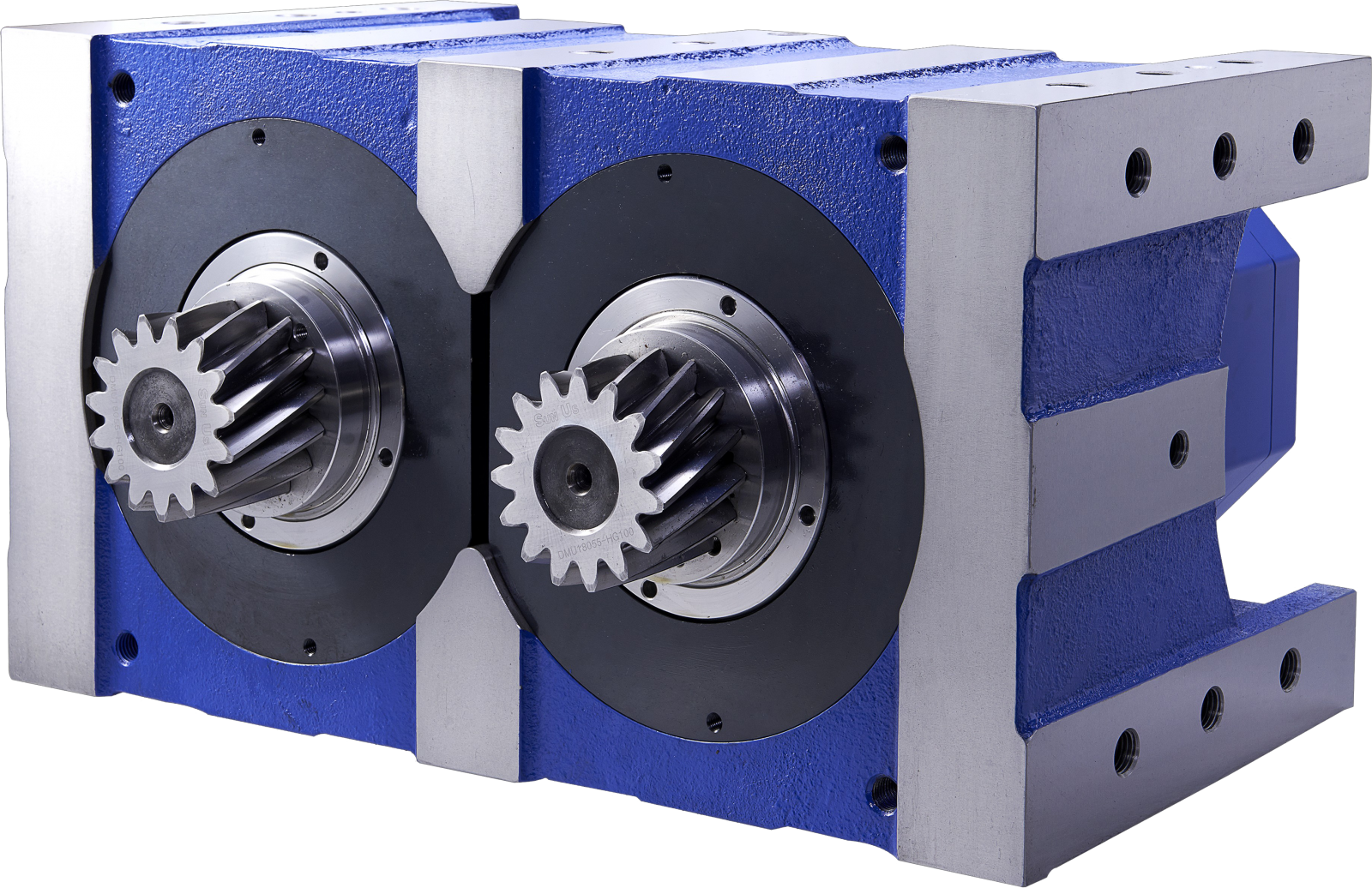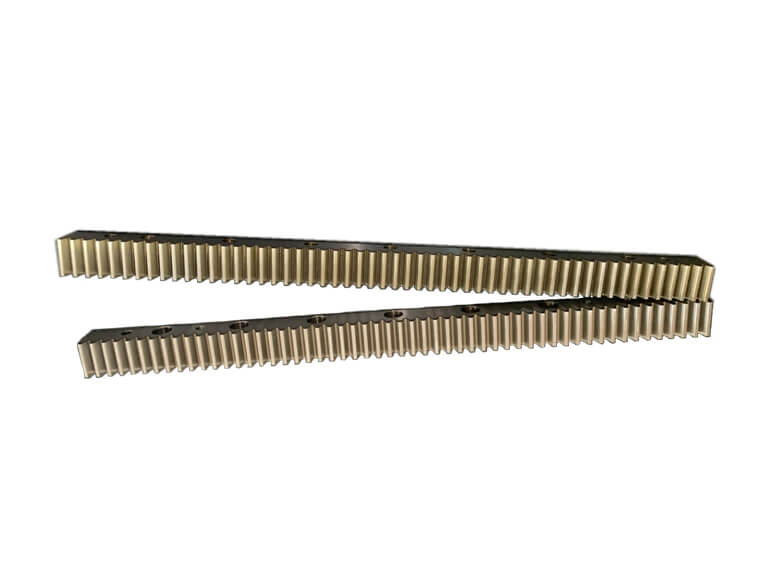Common approaches to adopting heat treatment of gears and racks
Heat treatment is often required in the production of gear parts. Depending on the needs of use, the expected effects can be achieved through heating, heat preservation and cooling. Generally speaking, the heat treatment methods of gears are as follows.
Quenching of rack and gear surface
Commonly used in medium carbon steel and medium carbon alloy steel, such as S45C, SCM440, and etc. After the surface is quenched, the hardness of rack the rack surface is generally HRC40~55. Its characteristics are anti-fatigue, anti-corrosion and good wear resistance. Due to the internal hardness of the gear, the rack itself still retains sufficient toughness to withstand general impact loads.
Gear carburizing and quenching
Commonly used in low carbon steel and low carbon alloy steel, such as SNCM220, SCM415, etc. After carburizing, the tooth surface hardness can reach 56~62HRC, while the tooth center still maintains high toughness. The gear forgings have high bending strength and tooth surface contact strength, good wear-resistance, and are often used for impact loads and transmission. In general, after the gear is carburized, the degree of deformation tends to be larger and requires the tooth surface grinding process.
.jpg)



.jpg)




Nitriding of gear tooth surface


Nitriding is a process of thermo-chemical heat treatment. No other heat treatment is required after nitriding, and the tooth surface hardness can reach 700-900HV. Due to the high hardness of the nitriding gear, low process temperature and slight deformation, it is suitable for internal gears and gears that are difficult to grind. It is often used for nitriding steels containing chromium, copper, lead and other alloy elements, such as 38CrMoAlA.
Hardening and tempering
Hardening and tempering is generally used for medium carbon steel and medium carbon alloy steel, such as S45C, 40Cr, 35SiMn steel and so on. The hardness of the tooth surface after hardening and tempering is generally 220~280HBS. Due to its low hardness, fine finishing of the gear teeth should be carried out after hardening and tempering.
Tempering
Tempering can eliminate internal stress, refine grains, and improve mechanical properties and cutting performance. Gear forgings with low mechanical strength requirements can be tempered with medium carbon steel, and gear forgings with large diameters can be tempered with cast steel.
Keyword Search
Category
Keywords
- Heat treatment
- Gear components
- Quenching
- Rack and gear surface
- Carburizing and quenching
- Gear tooth surface nitriding
- Hardening and tempering
- Gear hardness
- Tooth surface grinding
- Deformation control
Recommended
- Construction, principles and advantages of planetary gear reducers
- Root cause of abnormal noise in planetary gear reducers (2)
- Root cause of abnormal noise in planetary gear reducers (1)



